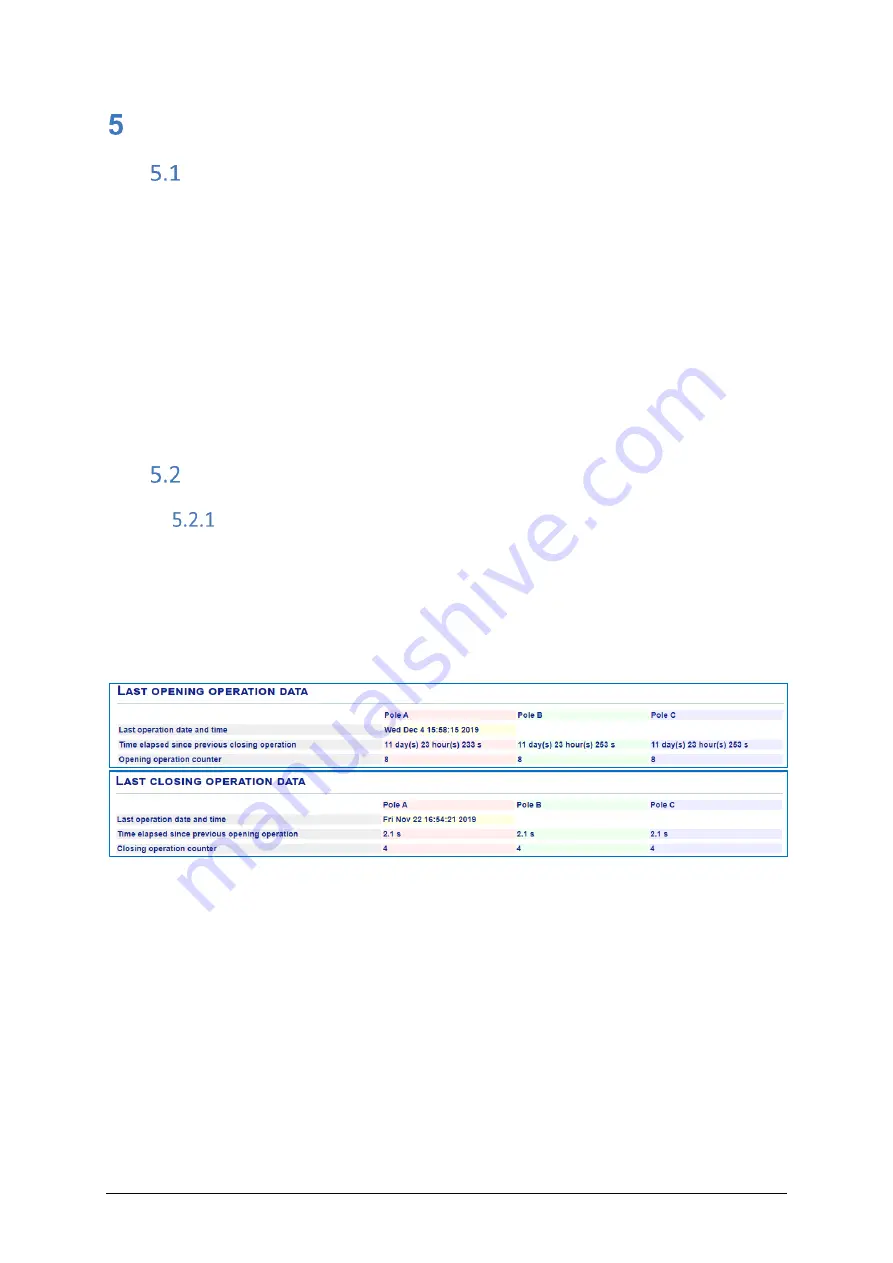
MA-037 - CB Watch 3 Operating Manual
v7.0 - May 2020
Page 25 of 118
OPERATION TIMING MONITORING
Introduction
The monitoring of the dynamic parameters during the operations of a circuit breaker
(operating time, speed etc.) allows for a diagnostic to be made of any mechanical issue or
significant drift in its speed of operation.
•
Without a travel sensor installed in the CB (which represents the vast majority of
cases found in the field), auxiliary position contacts (52a and 52b) are used to
ascertain position and provide change of status timing.
•
With a travel sensor installed (during the manufacturing of the CB as difficult to
retrofit afterwards), more precise position data becomes available without relying
on the auxiliary contacts. This unlocks additional functionalities.
Both options will be outlined although the first is, by far, the most common:
Functionalities available Without Travel Sensor
Number of operations
For each pole, the following information is recorded:
•
date and time of the last opening and closing operation
•
time elapsed since the corresponding previous close/open operation
•
cumulative number of opening and closing operations performed
HMI: Measurements / Last opening results or Last closing results
Figure 27
–
Number of opening/closing operation
Traditionally the mechanical counter in a CB only counts opening operations and there is
always a corresponding closing operation which is not counted. So it always counts a
“
pair
”
of operations. The numbers of opening and closing operations recorded in the CBW3 match
the mechanical counter and usually show the same value or are out by one.
The number of operations already performed when retrofitting a CBW3 can be entered in
the opening and closing operations counters during commissioning, to match the
mechanical counter present on the circuit breaker.


































